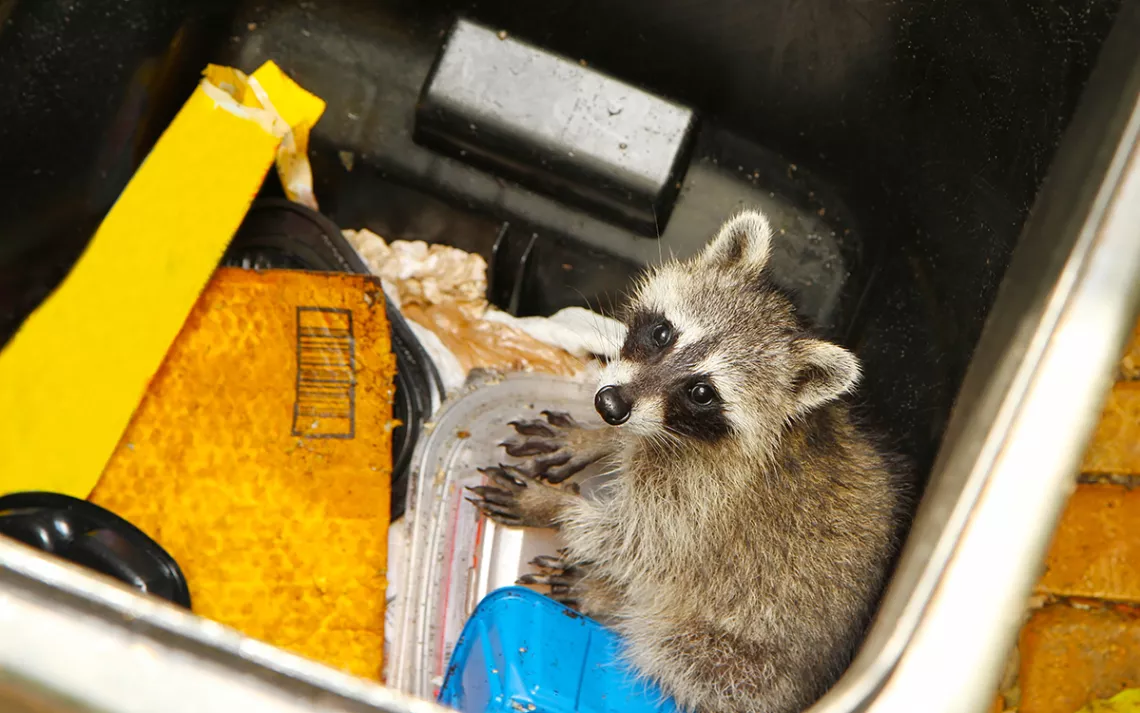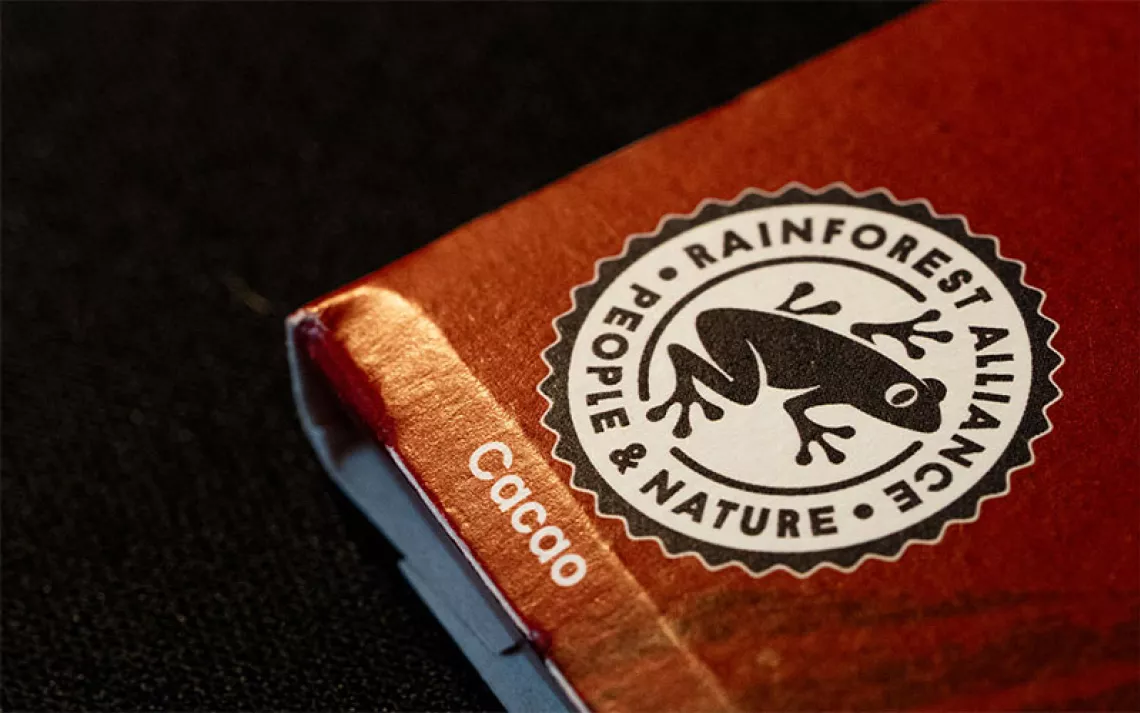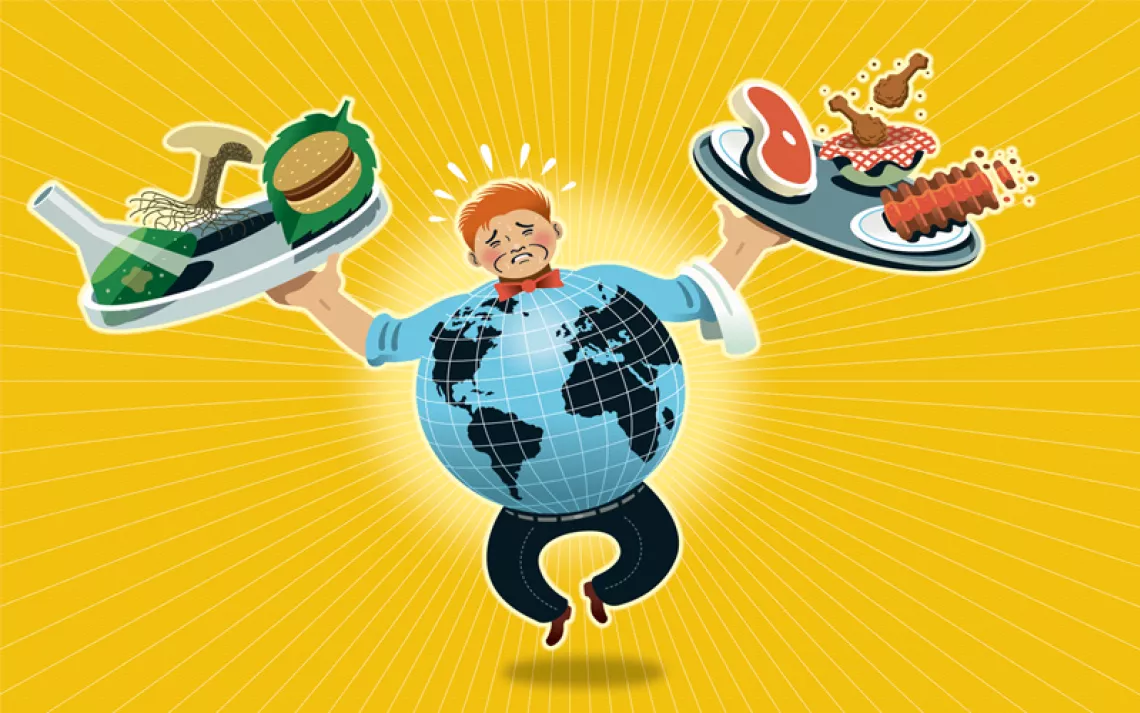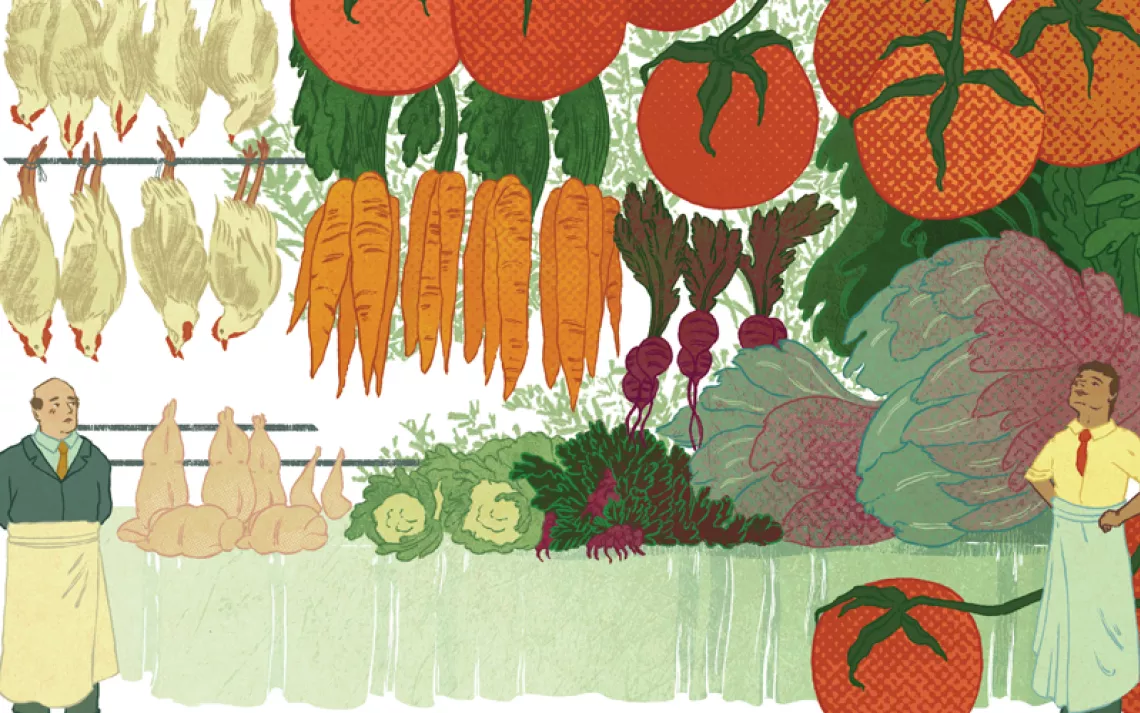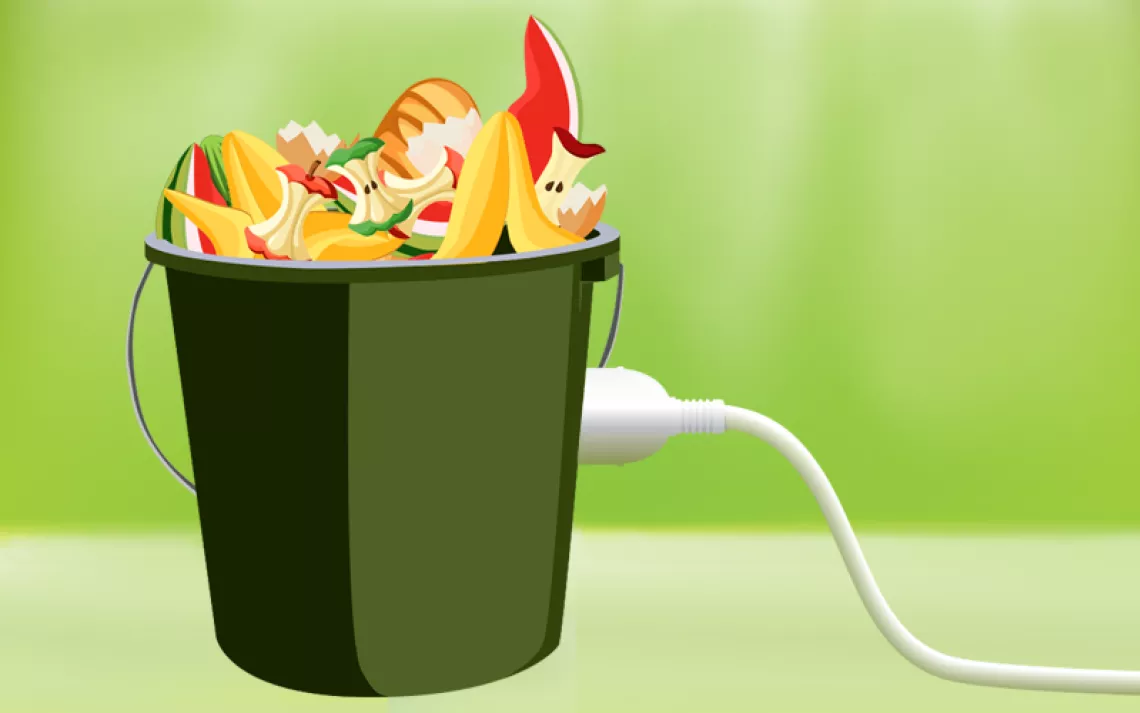Dig Into Food-Upcycling Apps
Digital solutions that save money and resources while slashing food waste’s massive emissions
Around 40 percent of America’s food supply winds up unsold or uneaten each year. That’s roughly 219 pounds per person rotting in fields, swirling down drains, or being shunted to incinerators and landfills that contribute to climate change. Not to mention all the resources—the water, energy, fertilizers, pesticides, land, labor, and transport—that went into producing those squandered calories. But a new crop of food-upcycling apps intends to change all that.
Some sell discounted wonky produce, à la Hungry Harvest, Imperfect Foods, and Misfits Market. Others, like OLIO, encourage sharing between neighbors. But most focus on food recovery—salvaging deliciousness headed for dumpsters at restaurants and retailers—including Flashfood, Till, and Too Good to Go.
“Food banks are great at what they do, but they’re not that nimble,” says Jonathan Deutsch, a Drexel University professor and the director of its Food Lab. “If you have a wedding with some beautiful prime rib and cake left over at 11:30 on a Saturday night, there’s no way to get that to people through a traditional food bank system. But using the power of technology, it could be on tables the next day.”
Deutsch is also a fan of less-than-picture-perfect produce. Take tomatoes: for the fruit to really dazzle on supermarket shelves, it needs to be shipped while firm. “They’re not going to be bursting at the seams with ripeness and juices,” he points out. “So sometimes the most delicious, ripest produce you get is the ugliest!” Deutsch recommends fish cuts beyond the thick center filet too. The small bits “taste exactly the same and may be easier to cook, depending on what you’re doing with it. And you can get great deals on that and broken shrimp for pasta dishes or paella.” (Read more about the movement to reduce seafood waste.)
Interestingly, the biggest adopters of upcycled foods tend to be Baby Boomers, according to a study Deutsch helped author. “I think part of it is the thrifty mentality a lot of us who are older grew up with. Also, it just kind of makes good culinary and common sense.”
Plenty of Room at the Table
The questions of who can—and “should be”—using these smartphone apps often arises. Almost 14 million US households (10.5 percent) didn’t have enough calories available at some time during 2020, according to the USDA. But experts say that apps don’t take food out of the mouths of underprivileged families. Deutsch explains: “The problem is so vast that there’s still an abundance of food going to people who need it. Second, any food emergency organization prefers cash to food. So if a restaurant can donate financially [to a hunger operation], that’s much preferred to getting four sandwiches to a local shelter.”
Claire Oliverson, US head of marketing for the app Too Good to Go, confirms this: “According to ReFed’s Insight Engine, only 3.5 percent of [surplus] food is actually donated. Our absolute golden rule for partners is donate first and donate as much as you can,” she says. “If you have additional food, that’s where we come in. It’s really hard for food insecurity organizations to pick up small amounts or perishable foods a lot of the time. What we try to do is pull apart the issues and say ‘support both!’”
Launched in Copenhagen in 2016, Too Good to Go has roots in the European activist community, which bootstrapped the app without seed money. The B Corp now has over 1,000 employees globally. It hit the United States in 2019 and already has over 2 million users across a dozen cities, who have rescued 1.6 million meals here. Users can purchase deals on surprise bags from local businesses: the contents range from coffee to barbecue, desserts, pizza, sandwiches, and even canned goods near their best-by dates.
Oliverson stresses that, contrary to common wisdom around expiration labels, this food is safe. “We have a campaign running in Europe, which is ‘look, smell, taste, don’t waste’—basically, use your senses!” The US Food and Drug Administration agrees: Don’t reflexively discard foods with expired-looking labels. These just indicate the manufacturers’ best guesses at when peak freshness, flavor, and quality will start to decline. Each year Americans throw away $32 billion worth of consumables because of confusion on this front. Closer to home, this costs the average family $1,365 to $2,275, according to a landmark study by the Harvard Food Law and Policy Clinic and the Natural Resources Defense Council.
Like many in the food rescue space, Kate Leadbeater, Flashfood’s VP of marketing, would like to see more labeling clarity and education. “There needs to be some standardization to make it easier for consumers.” The Flashfood app allows shoppers to select discounted groceries, which saves them $540 per year on average. “It gives them access to more varied food, healthier food, and things they can find joy in,” she says. “Often when your budget is really tight, the selection is limited. Maybe some of the things that your family gets excited about—or have great memories associated with—aren’t on the shopping list because of the cost.” She mentions a mother delighted to introduce her children to mangoes and a financially strapped senior who could finally afford fish again as two heartwarming letters the company has received.
“Food waste is a very time-sensitive issue. You’ve got a very small window to redistribute that food so nothing good goes to waste,” Leadbeater says. “Digital solutions are the way to do it.”
Fine-Tuning Tech’s Role in Food Rescue
Some see apps as works in progress, like Tanja Hester, author of Wallet Activism, which breaks down consumers’ financial power when it comes to effecting change. “If you buy an Imperfect box, it’s going to have a ton of food that was produced nowhere near where you live,” she points out. “They’re shipping stuff from all over the country, sometimes out of the country. And the produce isn’t wrapped in plastic, generally, which is good. But if you get eggs, they’ll put them in a plastic carton, which is wrapped in bubble wrap. They will now take the ice packs and the insulated bags back, but not the cardboard cartons. So you’re still generating a pretty massive amount of waste.”
Imperfect Foods’ website says that this packaging is 100 percent recycled and that it batch-delivers to neighborhoods, the emissions equivalent to taking 2,800 cars off the road for a year. The company also cites a Generation Investment Management study that found ordering online emits 17 percent less carbon dioxide than individuals’ brick-and-mortar shopping does.
Still, Hester recommends examining apps closely to make sure they’re well integrated locally and align with all your values. She encourages consumers to go beyond quick convenient action—and sweet relief on the food-budget front—to push for systemic changes that increase equity and access to food.
At the end of the day, she applauds people trying to take steps. “My critique is on the means of production, not the proletariat,” she says, laughing. “I fully respect the idea that [app companies] have to start somewhere and then learn! But hailing these things as a magical solution is probably a bit premature.”
Patrick Lydon, director at the urban ecology studio City as Nature, echoes this ethos. “These apps are providing a useful and needed service. However, they are also a sign of a tech industry focused on addressing symptoms rather than root causes,” he says. “Food waste could be solved more fully and equitably if it were tackled at the community level, with neighborhood farms, local and regional food cooperatives, regenerative agriculture networks, and community-supported agriculture models. These approaches can solve hunger and environmental and food waste issues simultaneously, while empowering communities and not relying on third-party technological business models.”
 The Magazine of The Sierra Club
The Magazine of The Sierra Club
